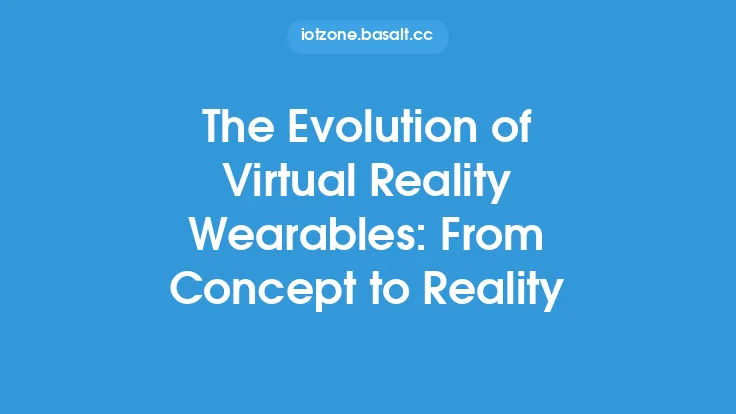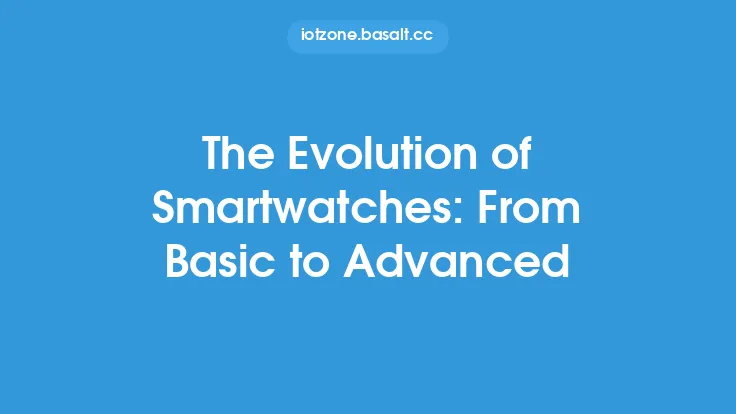The concept of wearable devices has been around for decades, with the first wearable computer being developed in the 1960s. However, it wasn't until the 1990s and early 2000s that wearable technology started to gain traction, with the introduction of devices such as the calculator watch and the first Bluetooth headsets. These early devices were primarily focused on providing a specific function, such as calculating or hands-free communication, but they laid the groundwork for the modern wearable devices we use today.
History of Wearable Devices
The history of wearable devices is a long and varied one, with contributions from a wide range of fields, including computer science, engineering, and fashion. One of the key milestones in the development of wearable devices was the introduction of the first smartwatch, the Seiko Receptor, in 1998. This device was able to receive emails and notifications, and was a major step forward in the development of wearable technology. In the following years, other companies, such as Microsoft and IBM, began to develop their own wearable devices, including smartwatches and fitness trackers.
Advancements in Technology
The advancement of technology has played a major role in the evolution of wearable devices. The development of smaller, more powerful processors, and the introduction of new materials and manufacturing techniques, have enabled the creation of devices that are both functional and fashionable. The introduction of touch screens, voice assistants, and other user interfaces has also made wearable devices more user-friendly and accessible. Additionally, the development of wireless communication technologies, such as Bluetooth and Wi-Fi, has enabled wearable devices to connect to other devices and the internet, expanding their functionality and capabilities.
Types of Wearable Devices
There are many different types of wearable devices, each with its own unique characteristics and functions. Some of the most common types of wearable devices include smartwatches, fitness trackers, smart glasses, and hearables. Smartwatches, such as the Apple Watch and Samsung Gear, are designed to provide a range of functions, including time-keeping, notification alerts, and fitness tracking. Fitness trackers, such as Fitbit and Garmin, are designed to track physical activity, sleep, and other health metrics. Smart glasses, such as Google Glass, are designed to provide a heads-up display of information, and can be used for a range of applications, including navigation and communication. Hearables, such as wireless earbuds and headphones, are designed to provide high-quality audio and can often be used for voice commands and other functions.
Components and Sensors
Wearable devices typically consist of a range of components and sensors, including processors, memory, batteries, and sensors. The type and number of components and sensors used can vary depending on the specific device and its intended function. For example, a fitness tracker may include sensors such as accelerometers, gyroscopes, and heart rate monitors, while a smartwatch may include a touch screen, GPS, and Wi-Fi connectivity. The choice of components and sensors used can have a significant impact on the performance, functionality, and power consumption of the device.
Power and Battery Life
One of the major challenges in the development of wearable devices is power consumption and battery life. Many wearable devices require a significant amount of power to operate, particularly if they include features such as GPS, Wi-Fi, and touch screens. However, the small size of wearable devices means that they often have limited battery capacity, which can result in short battery life. To address this challenge, manufacturers have developed a range of power-saving technologies, including low-power processors, energy-harvesting technologies, and advanced battery management systems.
User Interface and Experience
The user interface and experience of wearable devices is critical to their success. A well-designed user interface can make a device easy to use and understand, while a poorly designed interface can be frustrating and difficult to use. Many wearable devices use touch screens, voice assistants, or other user interfaces to provide an intuitive and user-friendly experience. Additionally, the design of the device itself can have a significant impact on the user experience, with factors such as comfort, style, and durability all playing a role.
Applications and Use Cases
Wearable devices have a wide range of applications and use cases, from fitness and health to communication and navigation. Some of the most common applications of wearable devices include tracking physical activity, monitoring health metrics, receiving notifications, and controlling other devices. Wearable devices can also be used in a range of industries, including healthcare, finance, and education, and can provide a range of benefits, including improved productivity, enhanced safety, and increased convenience.
Future Developments
The future of wearable devices is exciting and rapidly evolving. Advances in technology, such as the development of artificial intelligence, augmented reality, and the Internet of Things, are expected to enable the creation of even more sophisticated and functional wearable devices. Additionally, the increasing popularity of wearable devices is driving innovation and investment in the field, with new companies and products emerging all the time. As wearable devices continue to evolve and improve, we can expect to see even more innovative applications and use cases, and a greater impact on our daily lives.




